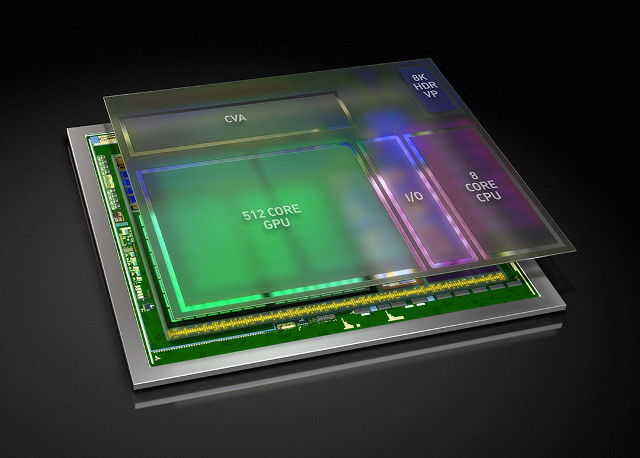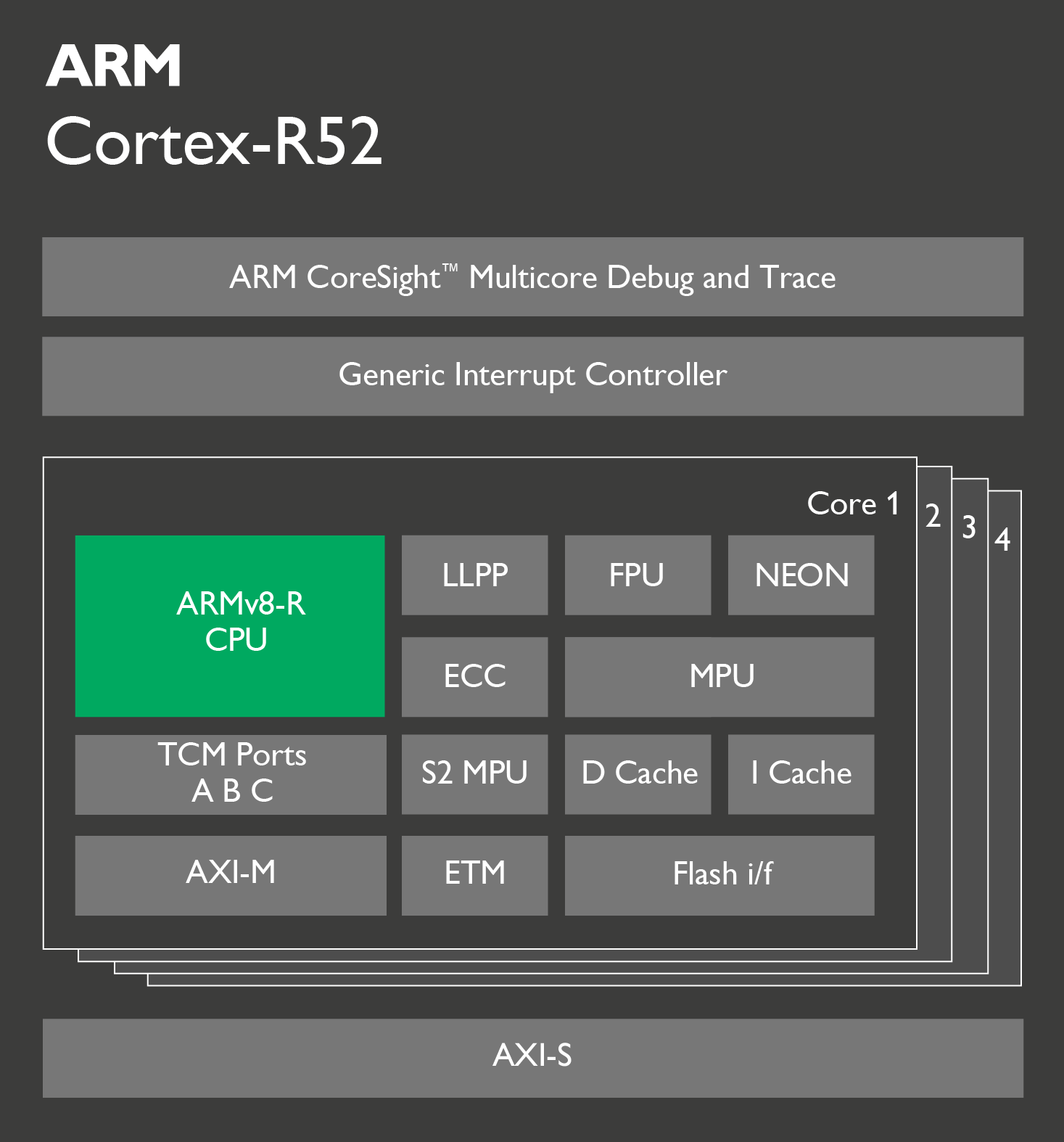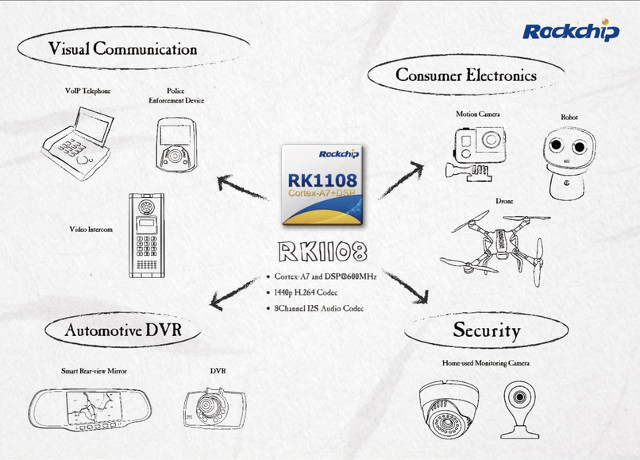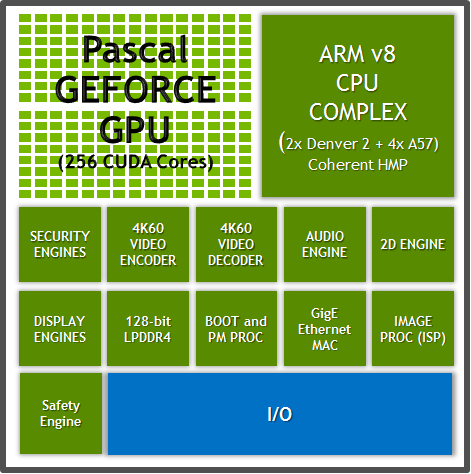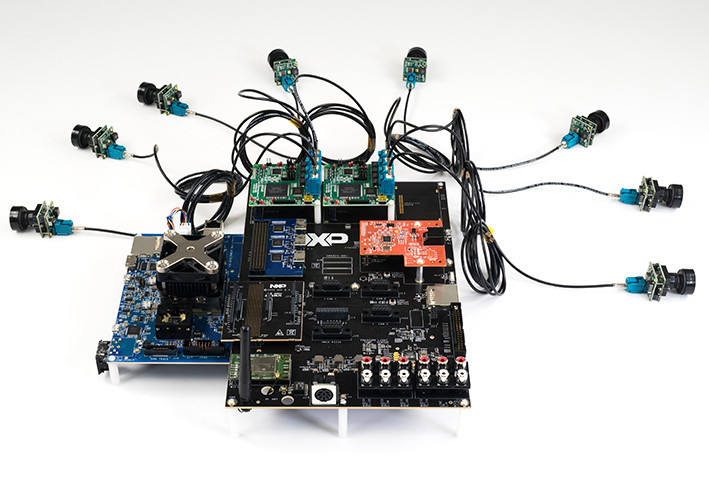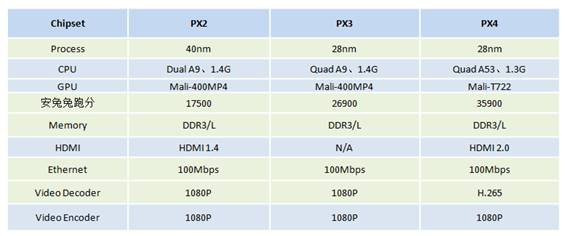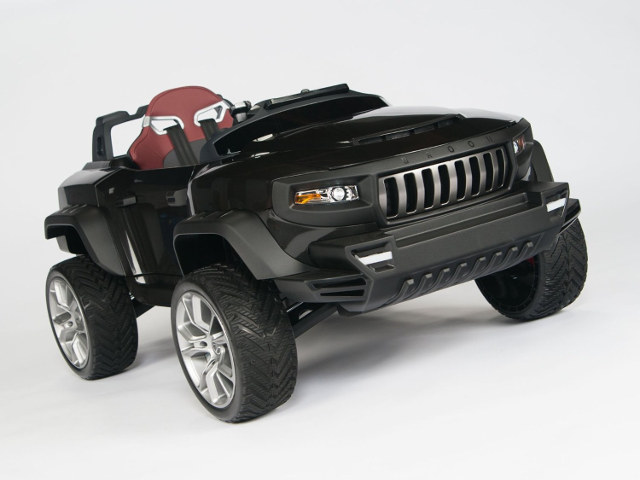Nvidia has introduced the successor to their Parker SoC mostly targeting self-driving cars and artificial intelligence applications, with Xavier SoC featuring 8 custom ARMv8 cores, a 512-core Volta GPU, a VPU (Video Processing Unit) supporting 8K video decode and encode and HDR (High Dynamic Range), as well as a computer vision accelerator (CVA). The processor will deliver 20 TOPS (trillion operations per second) of performance, while consuming only 20 watts of power, and since it’s designed specifically for autonomous cars, it will comply with automotive safety standards such as ISO 26262 functional safety specification. Anandtech published a comparison table with Tegra X1 (Erista), Parker, and Xavier using currently available information. Xavier Parker Erista (Tegra X1) CPU 8x NVIDIA Custom ARM 2x NVIDIA Denver + 4x ARM Cortex-A57 4x ARM Cortex-A57 + 4x ARM Cortex-A53 GPU Volta, 512 CUDA Cores Pascal, 256 CUDA Cores Maxwell, 256 CUDA Cores Memory ? LPDDR4, […]
ARM Unveils Cortex-R52 ARMv8-R CPU Core for Safety-Critical Systems
ARM has introduced their very first ARMv8-R real-time 32-bit CPU core with Cortex-R52 designed for safety-critical applications in the automotive, industrial and health-care markets. It has been designed to address higher workloads with increased performance (up to 35%) compared to Cortex-R5 processor. The processor should be used in systems capable of fulfilling IEC 61508 SIL 3 and ISO 26262 ASIL D functional safety requirements. ARM explains the new processor address both random errors for example bit flipping from radiation, and systemic errors more related to software or design faults. The latter can be addresses with the right development processes, including following aforementioned functional safety standards, but random errors require some extra hardware features such as ECC memory, or dual core lock step processors, where instructions are run on two processors simultaneously and results compared. Normally, the whole software stack must be validated and certified on safety-critical systems, even for part […]
Rockchip RV1108 Cortex A7 + DSP SoC is Made for Audio & Video Conference and Recording Applications
[Update May 2017: Rockchip has renamed RK1108 to RV1108.] Rockchip has introduced RV1108 ARM Cortex A7 SoC with a 600 MHz DSP targeting visual communication, consumer electronics, automotive DVR, and security applications thanks to its 8-channel I2S audio codec and 1440p H.264 video encoder and decoder. Detailed specifications can be found on the official Rockchip Wiki: CPU – Single-core ARM Cortex-A7 Core processor with NEON and FPU, 32KB/32KB L1 I-Cache/D-Cache, Unified 128KB L2 Cache, and Trustzone Video/Image DSP – Up to 600 MHz, 32KB I-TCM and 32KB I-cache, 128KB D-TCM Memory 12KB internal SRAM DDR3/DDR3L interface – 16 Bits data width, 1 ranks (chip selects), up to 512 MB RAM NAND Flash Interface – 8-bit async NAND flash, 16-bit hardware ECC eMMC Interface – Compatible with standard iNAND interface, eMMC 4.51 standard. SD/MMC Interface – Compatible with SD 3.0, MMC 4.41 System Component 2x 64-bit timers with interrupt-based operation 8x […]
Nvidia Provides More Details About Parker Automotive SoC with ARMv8 Cores, Pascal GPU
Nvidia demonstrated DRIVE PX2 platform for self-driving cars at CES 2016, but did not give many details about the SoC used in the board. Today, the company has finally provided more information about Parker hexa-core SoC combining two Denver 2 cores, and four Cortex A57 cores combining with a 256-core Pascal GPU. Nvidia Parker SoC specifications: CPU – 2x Denver 2 ARMv8 cores, and 4x ARM Cortex A57 cores with 2MB + 2 MB L2 cache, coherent HMP architecture (meaning all 6 cores can work at the same time) GPUs – Nvidia Pascal Geforce GPU with 256 CUDA cores supporting DirectX 12, OpenGL 4.5, Nvidia CUDA 8.0, OpenGL ES 3.1, AEP, and Vulkan + 2D graphics engine Memory – 128-bit LPDDR4 with ECC Display – Triple display pipeline, each at up to 4K 60fps. VPU – 4K60 H.265 and VP9 hardware video decoder and encoder Others: Gigabit Ethernet MAC Dual-CAN […]
NXP Unveils i.MX 8 Multisensory Enablement Kit with Hexa Core ARMv8 Processor
Freescale, now NXP, i.MX 8 processors have been a long time coming, but finally the company has now unveiled a Multisensory Enablement Kit based on i.MX 8 hexa core ARMv8 processor combined with a Vulkan-ready & OpenCL capable GPU. Key features of the development kit: Multisensory Processor Board Multisensory Expansion Board Isolation and separation of secure, safe and open domains Rich compute (6x ARMv8 64-bit main CPUs, OpenCL GPU) Vulkan-ready GPU with HW tessellation and geometry shading Efficient, multi-screen (4x) support via HW virtualization Failover-ready display path Up to 8x camera input for 360 degree vision Integrated vision processing HDR enhanced video Multi-sensor fusion and expansion Multi-core audio and speech processing NXP radio solution integration However, at the time of writing, there’s very little information about i.MX8 processors themselves, but I’m confident much more info should soon surface as NXP FTF 2016 is taking place now until May 19, 2016. […]
Rockchip PX3 and PX4 Processors Are Designed for Automotive Infotainment & Dashboards
Rockchip PX2 processor, similar to Rockchip RK3066 but targeting industrial and automotive applications, was launched in 2014. Rockchip now has at least two new member in their PX family with PX3 and PX4 specifically designed for automotive infotainment and car dashboards thanks to dual display support, at least according to one article on Elezine. Rockchip PX3 is definitely confirmed with its own page on Rockchip website, and features a quad core Cortex A9 @ 1.4 GHz with a Mali-400MP4 GPU, and while there’s no info about PX4 yet on the company website, the SoC should come with a quad core Cortex A53 processor @ 1.3 GHz with a Mali-T722 GPU, as well as HDMI 2.0 video output, and H.265 video decoding. The article also lists 7 key function of Rockchip solutions: “Quick startup and fast revert track” Navigation system with free updates HD video recording (car DVR) Advanced ADAS algorithm […]
Henes Broon T870 is a Kids’ Electric Car Controlled by an Android Tablet
If you ever wanted to played around with an electric car that’s a bit better than an RC toy, but don’t quite have the cash for a full-size Tesla model, Henes has designed an electric card for you your younger kids that’s controlled by an Android tablet and allows both manual and remote driving. Henes Broon T870 specifications: Tablet – 7″ Android 4.4.2 tablet PC smart system with HD resolution display, micro SD, HDMI and audio output ARM Cortex-M3 based main control system Bluetooth remote control Built-in stereo speakers Functioning hood & doors 4 wheel drive with high density urethane tires Spring suspension & shock absorbers Leather bucket seat and seat belt Foot pedal accelerator Bright Headlight / Aux Light / Turn Signal Light / Tail/Brake/BackUp Lights Motors – Dual 24V driving motors Battery – Rechargeable 24V 7Ah battery pack for a little over 2 hours drive, or up to […]
Renesas R-Car M2 Porter is a Linux Development Board for Your Car
So far, I always assumed development boards specifically designed for automotive applications would only be available to companies in the car or truck business, but as I wrote about FOSDEM 2016 schedule yesterday, I found out that one of the talk with cover FOSS software stacks that are available for automotive, and usable on hobbyist boards such as Raspberry Pi 2 and Minnowboard Max, but also on Renesas R-Car M2 Porter board specifically designed for automotive infotainment applications. Renesas Port board specifications: SoC – Renesas R-Car M2 dual core ARM Cortex-A15 processor @ 1.5GHz with PowerVR SGX544MP2 GPU, Renesas 2D graphics processor, and Multimedia Engine SH4A @ 780 MHz System Memory – Dual channel 2GB DDR3 Storage – On-board 4 MB SPI, and 64 MB SPI, 1x SATA rev 3.1 connector, 1x SD card slot, and 1x micro SD card slot Video Output / Display I/F – HDMI and LVDS […]


